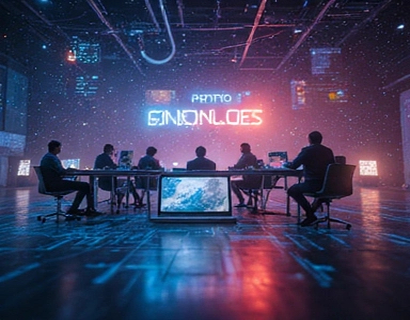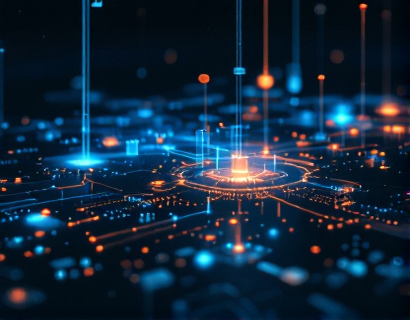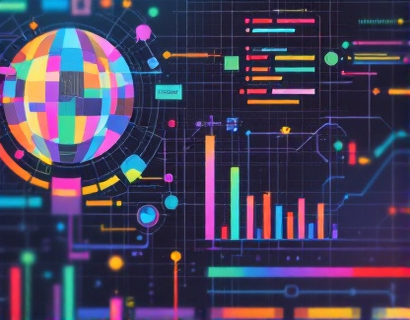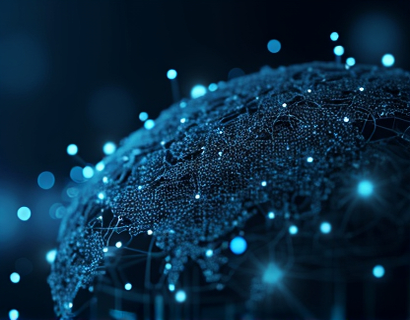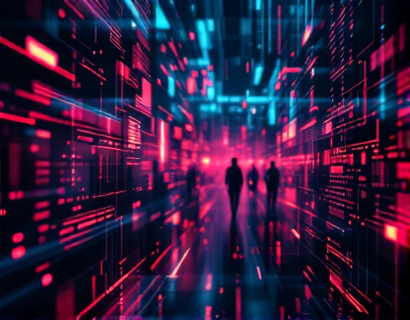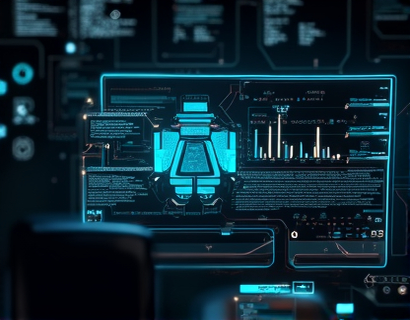Revolutionizing Productivity in the Digital Age: The Synergy of AI and Cryptocurrency
The intersection of artificial intelligence (AI) and cryptocurrency is ushering in a new era of digital productivity, transforming the way we work, interact, and manage our digital lives. This fusion of technologies is not just a novel concept but a practical solution that is already enhancing efficiency and innovation across various sectors. For tech enthusiasts and early adopters, understanding how AI and cryptocurrency are redefining workflows is crucial. This article explores the transformative impact of these next-generation innovations and how they are maximizing digital productivity.
The advent of AI has already revolutionized numerous industries by automating routine tasks, providing insights through data analysis, and enhancing user experiences through personalized interactions. When combined with the decentralized and secure nature of cryptocurrency, the potential for innovation becomes even more profound. Cryptocurrency, with its blockchain technology, offers a transparent, immutable, and secure way to conduct transactions, store value, and create decentralized applications (dApps). This combination opens up new possibilities for creating smart, efficient, and user-centric digital ecosystems.
Enhancing Workflow Efficiency with AI
AI technologies, such as machine learning and natural language processing, are being integrated into various tools and platforms to streamline workflows. For instance, AI-powered virtual assistants can manage schedules, prioritize tasks, and even draft emails, freeing up valuable time for more critical tasks. These assistants learn from user behavior and preferences, continuously improving their performance and personalization. In a professional setting, AI can automate repetitive administrative tasks, such as data entry and report generation, reducing the risk of human error and increasing overall productivity.
In creative fields, AI tools are assisting artists, writers, and designers by generating ideas, creating content, and even predicting trends. For example, AI-driven writing assistants can help authors by suggesting alternative phrases, improving grammar, and even generating entire drafts. Similarly, AI-based design tools can propose layout options, color schemes, and typography, allowing creatives to focus on the higher-level aspects of their work. These tools not only save time but also inspire new possibilities and enhance the quality of output.
Cryptocurrency and Decentralized Applications
Cryptocurrency, particularly through blockchain technology, is revolutionizing the way we think about digital transactions and data management. Blockchain's decentralized nature ensures that data is not controlled by a single entity, reducing the risk of censorship and fraud. This transparency and security are particularly valuable in business and personal finance, where trust and reliability are paramount. Smart contracts, self-executing contracts with the terms directly written into code, are another key feature of blockchain. They automate and enforce contractual obligations, reducing the need for intermediaries and lowering transaction costs.
Decentralized applications (dApps) built on blockchain platforms offer a new paradigm for software development and usage. Unlike traditional applications that rely on centralized servers, dApps are distributed across a network of computers, making them more resilient to attacks and downtime. This decentralization also means that users have greater control over their data and privacy. For instance, decentralized finance (DeFi) platforms allow users to lend, borrow, and trade assets without the need for traditional financial institutions, democratizing access to financial services.
Synergistic Benefits of AI and Cryptocurrency
The combination of AI and cryptocurrency creates a synergistic effect that amplifies the benefits of both technologies. AI can enhance the security and efficiency of blockchain networks by detecting and preventing fraudulent activities, optimizing transaction processing, and improving consensus mechanisms. For example, machine learning algorithms can analyze transaction patterns to identify anomalies and potential security threats in real-time, ensuring the integrity of the blockchain.
On the other hand, cryptocurrency can provide the necessary incentives for AI systems to function effectively. In a decentralized ecosystem, tokens can be used to reward users for contributing computational power, validating transactions, or participating in governance processes. This token-based incentive structure aligns the interests of network participants, fostering a collaborative and secure environment. For instance, in decentralized autonomous organizations (DAOs), tokens can be used to vote on proposals and manage the distribution of resources, creating a more democratic and efficient governance model.
Case Studies and Real-World Applications
Several projects and platforms are already leveraging the power of AI and cryptocurrency to enhance productivity and innovation. One notable example is the use of AI in supply chain management. By integrating AI with blockchain, companies can track the movement of goods in real-time, ensuring transparency and traceability. AI algorithms can predict demand, optimize inventory levels, and identify bottlenecks, reducing costs and improving efficiency. This combination not only streamlines operations but also builds trust among supply chain partners through the immutable record-keeping provided by blockchain.
Another area where AI and cryptocurrency are making a significant impact is in the healthcare sector. AI-powered diagnostic tools can analyze medical data to identify patterns and suggest treatment options, while blockchain can secure patient records and ensure compliance with data privacy regulations. Smart contracts can automate the billing and insurance claims process, reducing administrative burdens and improving patient care. For instance, a project using AI for early disease detection and blockchain for secure data sharing has shown promising results in enhancing healthcare outcomes and reducing costs.
Challenges and Considerations
While the potential of AI and cryptocurrency in enhancing digital productivity is vast, there are several challenges and considerations that need to be addressed. One of the primary concerns is the technical complexity involved in integrating these technologies. Developers and businesses must have a solid understanding of both AI and blockchain to implement solutions effectively. Additionally, the regulatory landscape for cryptocurrency is still evolving, and compliance with varying laws and standards can be challenging. Ensuring user privacy and data security is also crucial, as both AI and blockchain handle sensitive information.
Another consideration is the energy consumption associated with blockchain, particularly proof-of-work (PoW) consensus mechanisms. While newer consensus algorithms like proof-of-stake (PoS) are more energy-efficient, the environmental impact remains a topic of debate. Developers and organizations should explore sustainable practices and technologies to minimize their carbon footprint.
Future Trends and Innovations
The future of AI and cryptocurrency is bright, with numerous trends and innovations on the horizon. One exciting development is the integration of AI with Web3, the next evolution of the internet built on blockchain principles. Web3 aims to create a decentralized, user-owned internet where data and applications are securely and transparently managed. AI will play a crucial role in personalizing user experiences, optimizing network performance, and enhancing security.
Another area of growth is the development of AI-powered NFTs (non-fungible tokens), which combine the uniqueness of NFTs with the intelligence of AI. These AI-generated digital assets can range from art and collectibles to virtual real estate and unique digital experiences. AI can create intricate and valuable NFTs, opening new markets and opportunities for creators and collectors.
Furthermore, the rise of edge computing, which processes data closer to the source, is complementing the capabilities of AI and blockchain. By reducing latency and improving data processing speed, edge computing enhances the performance of AI applications and blockchain transactions, making them more practical for real-world use cases.
Conclusion
The fusion of AI and cryptocurrency is not just a technological trend but a transformative force that is redefining productivity and innovation in the digital age. By leveraging the strengths of both technologies, we can create more efficient, secure, and user-centric digital ecosystems. For tech enthusiasts and early adopters, embracing this synergy offers exciting opportunities to stay ahead of the curve and drive meaningful change. As these technologies continue to evolve, their impact on various industries and aspects of daily life will only grow, paving the way for a more connected, intelligent, and prosperous future.






















